Ware Union Workhouse/Western House
The old and poor of Ware, 1839-1982
The ‘workhouse’ was a word that sent a shudder through every generation up to the Second World War. They were harsh places where those unable to support or care for themselves could end up living and working. Inmates were usually old and infirm, sick and poor, orphans and unmarried mothers. It was always a last resort and would have been a distressing and degrading experience.
Ware’s workhouse loomed high above the town and served as a reminder of what would happen to you if you became destitute and had to rely on the state.
In 1723, the first workhouse was situated on the corner of Crib Street and Collett Road. Initially, it accommodated 30 paupers or inmates. By the early 1830s there were nearly 400 inmates and a new one needed to be built. Others claimed “outdoor relief” for clothing and food but lived in their own homes.
In 1835 a new poor law act meant that Ware had to accept inmates from other parishes: Broxbourne, Gilston, Eastwick, Great Amwell, Great and Little Munden, Hoddesdon, Hunsdon, Standon, Stanstead Abbots, Stanstead St Margarets, Thundridge, Wormley and Widford became part of Ware Union.
The new workhouse
In 1839, a new workhouse was constructed on a piece of land in Homefield at the cost of £600. It was self-sufficient but meat and coal were supplied by the lowest tender. The building was in the standard ‘radial star’, similar to prisons. There was an entrance block, a porter’s lodge, the Guardian’s Boardroom and waiting rooms at the front; kitchens, a laundry and morgue at the back with four accommodation blocks radiating from a central supervisory hub. This way, the master could keep an eye on everyone in the yards below.
Life inside was cruel and hostile. Families and married couples were separated. Everyone was expected to work long hours and do difficult jobs in return for food and a bed, such as breaking stones and scrubbing floors. In 1927, Workhouse Master, Mr Dorrington was sent to prison for six months for spending money intended for inmates.
Deerfields and the NHS
In 1939, 202 residents of Barnet workhouse were evacuated and housed at ‘Deerfields’, a large red brick building which used to stand opposite. (Hartfield Court now stands on the site). This came to be known as ‘Barnet Block’ and housed casuals or tramps; men who trod from place to place looking for work and somewhere to sleep. Deerfields was demolished around 1990.
In 1948, the NHS took over the running of workhouses and the poor law was abolished. Many became hospitals for the elderly, general hospitals or were demolished. Ware Workhouse was re-named ‘Western House’ in an attempt to shake off some of the stigma. Many elderly people were terrified of entering them as inevitably, you would never come out. One man who used to work there in the 1950s remembered the appalling conditions of some of the wards, the lack of privacy or even curtains. Many patients had mental health issues and some were as young as forty.
Mr & Mrs Brown took over the running of Western House Hospital and Home, in July 1967, following the retirement of the previous ‘Matron and Superintendent’, Mr and Mrs Davenport.
From 1967-1983, the Browns lived with their family at 20, Collett Road, which was a tied house provided for the Matron and Superintendent ( this title was changed to Hospital Secretary). They moved out of Collett Road in July 1983 and, it is believed this is when Western House and Deerfield ceased to exist as a hospital and home for the elderly. It was council owned ‘Part 3’ accommodation and when the Browns took over, there were a few residents who had been there ever since it’s previous existence as a Workhouse!
The end of Western House
In 1975 the original building became listed. After it was closed in 1983 and despite its protected status it became run down. There were proposals to convert it into a hostel for the homeless in 1988 but that never happened. A small part built in 1935 at the rear remained for a few more years as Western House. The main building was boarded up and gradually became derelict and overgrown.
It was an appealing place for me as a 14 year-old to explore with friends and be frightened by ghost stories. The dark and damp corridors with their peeling paint, small broken windows and faded Christmas decorations fluttering in the breeze added to the desolate atmosphere. The kitchens still had a couple of enormous walk-in fridges and chairs were set out in the lounge as if the occupants had just left. Piles of dusty old clothes, books and shoes lay abandoned in the bell turret which was accessed through a tiny narrow door. They probably belonged to those who had died but had no relatives to collect them. The yards were covered with weeds, broken glass and mangled wood. The boiler house was dark and creepy, its red brick tower visible for miles. The cellars were like a maze and seemed to go on for ever. Strange noises and footsteps or a shadow moving in the corner would make us run away to the safety of the street. Somebody fell through a floor once but we’d still go back, even though it was dangerous (and scary) and we were told off by our parents and the neighbours.
A new lease of life
In the 1990s, work began to covert the building main in to 33 luxury flats and thankfully it was saved from further deterioration. Opened in 1995 and now known as the Octagon, some residents may not know the purpose for which it was intended.
The surviving records of the workhouse (up to the 1940s) were saved by Hertfordshire Archives & Local Studies and are available for the public to consult. Some names from early registers have been indexed on Hertfordshire names online. For more information on workhouses, see the excellent http://www.workhouses.org.uk/
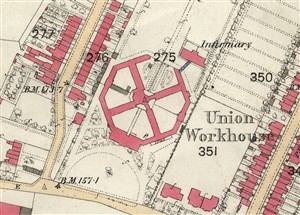
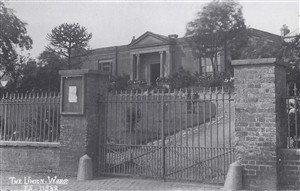


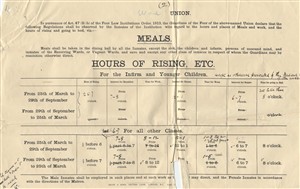
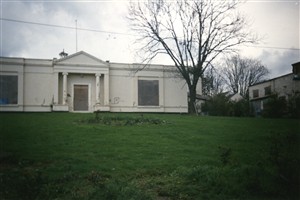
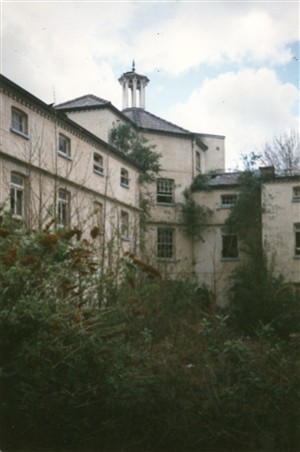
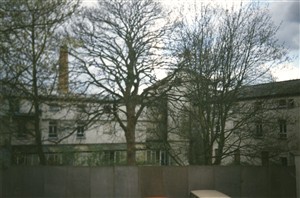
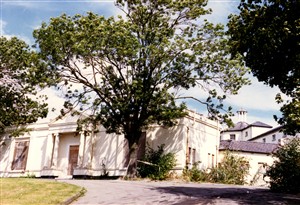




Add your comment about this page
It was more likely named ‘Barnet Block’ as people in the care of Barnet Public Assistance were evacuated there in the War. It is now converted from offices to flats, known as ‘High Oak House’.
I think there was a part of the workhouse that was called Barnett House which was named after the 50’s and 60’s TV and radio broadcaster Lady Isobel Barnett which she may have opened. At one time she was a doctor and a justice of the peace .